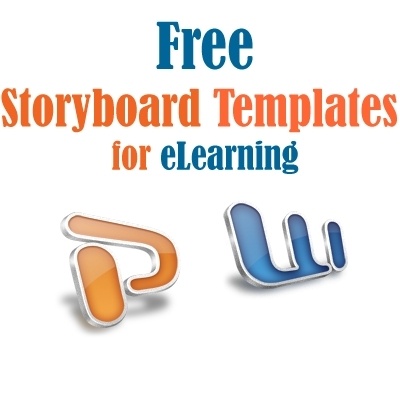eLearning Communication
An executive asked during a project planning meeting, “Why do we even need audio or video? I think text is good enough.”
As the lead developer on the project, I wasn’t ready for that type of simple and direct question. I never thought I’d have to explain such basic eLearning concepts to such powerful people. I was suddenly thrust into a position of defending our decision to add multi-media to the course. You may have been in similar situations.
How would you respond?
More importantly, how would you respond when a powerful executive asks the question during a high pressure meeting and you have only seconds to think of a response?
Fluency. noun. The ability to express oneself easily and articulately.
Experienced instructional designers and eLearning developers know a lot about creating effective and engaging courses. Unfortunately, many executives, managers, project sponsors, and SMEs often think they know more than they actually do about our methodologies. Everyone has an opinion on how a course should look and function based on “that time” when they “took that course.”
In corporate settings where time is money, we only have minutes – or seconds – to state our points. Without credibility and respect, we are too often bullied and pushed around into decisions that don’t always make good sense or could steer the project in the wrong direction.
When the Degree Isn't Enough
Many years ago I completed my M.Ed. in Instructional Design and Technology. My brain was over-flowing; I was a walking eLearning encyclopedia. I walked confidently into meetings, knowing that I could chat endlessly on any eLearning topic - until I had my first project meeting where someone questioned my approach. They didn’t "get it" and didn’t think it would work. I was speechless; there were so many concepts and research results I could cite. But nothing came out of my mouth except a bunch of jumbled incoherent and disorganized phrases.
I also found out that referencing fancy eLearning jargon can be dangerous. As consultants, we have to maintain a delicate balance between sounding competent without insulting the other party. We have to break down complex ideas and methodologies into simple terms. The ability to eloquently break a challenging concept down into a few parts is a critical skill for an eLearning professional; one that is often overlooked. My graduate program never had a class on expressing ideas and mocking a consultation – I wish it had.
Without fluency, you can’t be persuasive. You can’t establish credibility. You can’t change minds and steer projects. You can’t convince someone with preconceived ideas that your thoughts and ideas on the project direction may be preferable.
The project sponsor, executive, or subject matter expert (SME) may not know you well. In fact, they may know nothing about you. They probably aren’t familiar with that amazing job you did on the XYZ project last year. Or your mastery of over 10 eLearning tools. They may form their entire impression of you in a few meetings. Meetings where you sometimes only have 30 seconds to explain a concept, design, or plan. During an eLearning project meeting or consultation, the seasoned eLearning professional needs to be quick on their feet. We never have time to consult a book or google the answer. The eLearning profession not only demands an understanding of core principles, but the ability to communicate those principles quickly, efficiently, and clearly at any given notice.
Most executives have preconceived ideas of what something ought to be or look like. Numerous times I’ve been questioned about the worthiness of designs that are common sense in my world, but foreign in theirs. When you’re working with non-eLearning people, which is quite often – they need you to filter the knowledge into something digestible. Not only digestible – but quickly. You only have a few moments to make a case before you start sounding unsure or unorganized. Executives and stake-holders won’t wait. Persuasion requires brevity. Brevity and succinctness gives the impression of confidence.
Study the Power of Three
My favorite strategy for presenting ideas quickly and clearly starts with the Power of Three technique. Many important concepts can be reduced to three main points. These main points should serve as a framework, or foundation, for offering engaging sound bites. Of course, if time allows, you should venture into additional details.
Let’s look at some useful examples below.
You can discuss...
the three main strategies for presenting content:
- Tell Them
- Show Them
- Let Them Do It
the three important parts of memory:
- Attention
- Encoding
- Retrieval
the three main learning styles:
- Visual
- Auditory
- Tactile
the three main performance gaps / learning objectives
- Knowledge
- Skills
- Attitudes
the three most common levels of “thinking” (based on Bloom’s Taxonomy). This is important for creating the course’s learning objectives:
- Remembering
- Understanding
- Applying
the three parts to structuring a clear learning objective:
- A measurable verb
- The condition under which performance occurs
- The criterion of acceptable performance
the first three levels of Kirkpatrick’s Evaluation Methods:
- Level One – Did they like it?
- Level Two – Did they score well and learn from the content?
- Level Three – Did they apply what they learned to the job?
the three main course planning questions:
- Who are the learners?
- What do they need to learn?
- What do they need to do after they learn it?
the Gradual Release Learning Model:
- Teach the material
- Provide guided practice
- Let them try on their own
three popular eLearning course structures:
- Linear and/or passive
- Branched and/or scenario-based
- Fully interactive and/or self-guided
the three cardinal sins of eLearning design:
- Narrating all the text
- Too much too fast = cognitive overload
- No interactivity
Studying the three points to many common eLearning concepts now, will construct mental frameworks for vocalizing clearer ideas and thoughts later. For example, borrowing from the learning styles concept, you could offer, “I designed the course to appeal to multiple learning styles, including visual and auditory.” Borrowing from Bloom’s levels of thinking, you could offer, “Even more important than what they remember, is what they can do and apply.”
Hopefully these examples prove useful to your eLearning career.






![Top 20 eLearning Statistics For 2019 You Need To Know [Infographic]](https://cdn.elearningindustry.com/wp-content/uploads/2019/08/top-20-elearning-statistics-2019-need-know.png)

